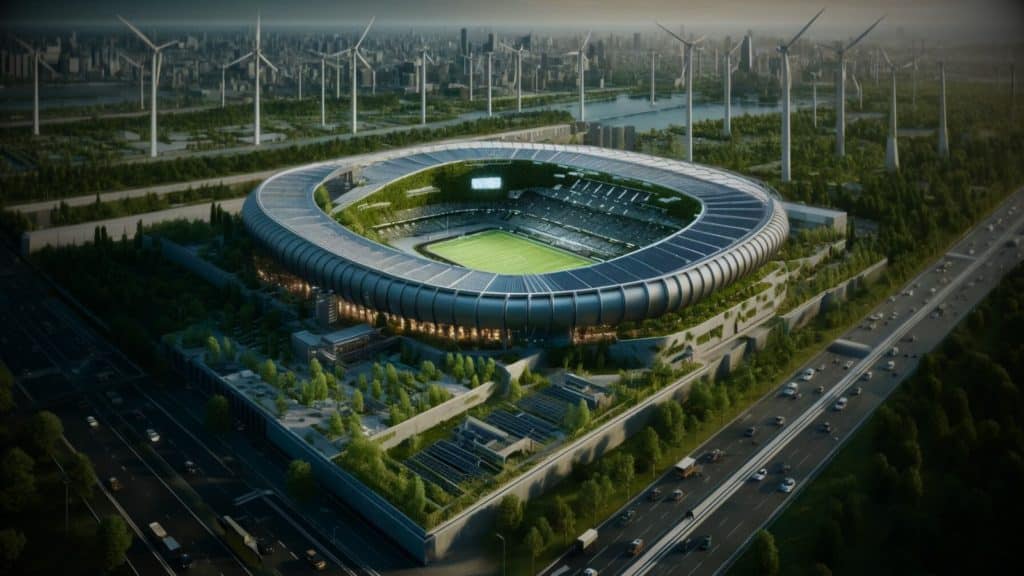The climate crisis is one of the most urgent issues of our time. The sports industry is not immune to its effects. As the world warms and weather patterns change, the challenges for the sports industry will become more severe. This article looks at some of the most crucial climate challenges the sports industry will face in the coming years.
When people think about the future of our planet, they often picture vast deserts and crumbling cities. It is a bleak picture. However, why does this matter to the sports industry?
With global revenues expected to reach $600 billion by 2025, the sports industry is one of the fastest-growing sectors globally. There are an estimated 140 million active participants worldwide.
That’s a lot of carbon emissions and water consumption. It also means that sports athletes will be at the forefront of change on our fragile planet.
With dramatic climate change impacting all areas of life. We must take necessary actions towards a better environment for our planet’s health and well-being. Whether you think the right move is sending your child to school dressed in green or becoming a climate advocate. There are plenty of ways sports can help contribute towards a greener future without sacrificing performance in any way.
The UN Climate Change Conference COP26, held in Glasgow – in November 2021, was the culmination of a global initiative. During the conference, the sports industry committed to reducing carbon emissions and pledged to reach Net Zero by 2050.
The meeting was significant because it hosted politicians from various backgrounds, signalling what could happen when politics and sports intersect. However, it was also a chance for a reprieve from high-pressure negotiations for many.
Why is the involvement of sports organisations significant?
During the COP26 in Glasgow, scientists presented their most recent findings to help shed light on newly released data. They concluded that based on the latest climate models, the planet is on track to warm over 2.5 degrees Celsius (4.5 degrees Fahrenheit). Figuring that this is the last best hope for climate action.
More than 280 sports organisations joined forces during COP26 to reduce 50% of carbon emissions by 2030 and reach Net Zero by 2050. The involvement of sports organisations at all levels should help to limit the emission of greenhouse gases since climate change is arguably the most crucial threat to the sports industry and its stakeholders. Therefore it is likely to cause severe damage to sporting and recreational opportunities.

What have we accomplished so far?
It’s important to note that the conference aimed to advance the international “green sport” arena by developing sustainable sports infrastructure. It is also important to note that this is only one part of the UN process towards achieving sustainable sport and climate change mitigation.
The UN’s Sports for Climate Action Framework Goal urges the sports sector to become a climate leader. The sports sector has already made several significant advances towards meeting this goal.(https://unfccc.int/sites/default/files/resource/Sports_for_Climate_Action_Declaration_and_Framework_0.pdf)
The conference was one of many events worldwide as part of the UN process towards achieving sustainable sport and climate change mitigation. However, it was a high-profile event reaching global attention from the international sports community and has been highlighted as one of its kind so far.
All stakeholders involved in sports must address issues related to climate change mitigation and sustainability. However, a gap exists between some stakeholders (like local politicians or governing bodies) and others (sports bodies and rights holders).
This review considers how various stakeholders from different sectors are working together towards achieving sustainable sport. Whether they are working on individual initiatives or through more systemic measures like innovative systems, legislative frameworks, or funding systems. Or whether they are working directly with sporting organisations at a national level, at an international level or on NGO networks; whether they are doing this alone or through partnerships with other organisations; whether their work is being acknowledged centrally or locally; whether it has been formalised or not but should be formalised through legislation based on existing legislation covering similar topics like climate change which encompasses all aspects of sustainability but can only be fully meaningful if all stakeholders bring their total weight behind a single overarching system rather than piecemeal actions which time and politics and nonsense lobbying can dilute.
Conclusion
The global sports industry has a huge role in addressing greenhouse gas emissions, a significant source of climate change. It must collectively take more responsibility for its environmental impact.
The sports industry has already made significant strides in reducing its environmental impact. For example, the United States and the European Union have already set new ecological performance standards for sporting goods manufacturers. They must also continue to create partnerships with other stakeholders and achieve sustainable practices to achieve similar goals.
However, there are still many opportunities for the sports industry to improve its environmental performance, including collaboration with other stakeholders such as governments, foundations, and NGOs. Industry sectors such as construction and transport can also support these efforts by adopting best practice policies and investing in green infrastructure projects or developing green fuels or re-certified non-toxic chemicals for use in construction materials. Sport will also need to become more responsible for hosting events that have an environmentally negative impact, such as climate change negotiations, which will increase sporting activities around the world.
Finally, I’d like to highlight the following key issues:
Sports organisations like the IOC, FIFA, UEFA and other significant promoters host significant events such as the Summer Olympics, World Cup, or Winter Olympic Games that bring communities together to celebrate their athletes. These international federations have developed regulations, frameworks, and guidelines to protect communities from potentially harmful policies and ideas when a city is selected to host an event. These policies and agreements must be binding legal contracts and obligations from host cities, the government, and everyone involved to protect local communities from potential harms, including environmental degradation that the major sporting events can trigger. [A follow-up analysis | Climate Challenges For The Sports Industry]


